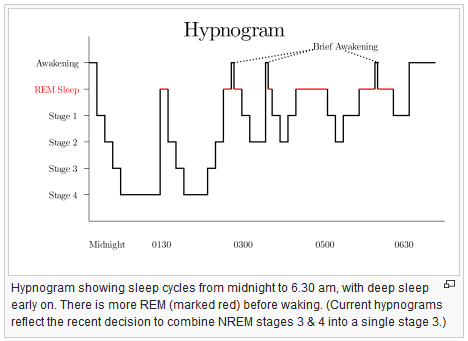What if I told you that I have one weird trick to help you have a lucid dream and/or out of body experience? This particular trick has been well documented elsewhere, but if you don’t want to read an entire book I’ll give you the quick version here. Also note that this is intended for weekends or non-work days in general, because it requires sleeping in a little.
What’s the difference?
Now you may be asking what the difference is between a lucid dream and an out of body experience. In the former it’s like a traditional dream, except that you’re lucid enough to do what you want — it’s not just a passive dream experience. Yet all the normal weirdness of a dream still applies.
In an out of body experience you typically start by “waking up” but soon realize that your surroundings are a little off. This is known as a false awakening. For me at least these out of body experiences don’t feel like a dream, yet are recognizable thanks to suffering from dream-like continuity problems. Additionally, physical things that don’t usually work in dreams (mirrors, light switches, etc.) will often function to some extent. In many ways it’s like a lucid dream only more grounded.
There’s no real yardstick for determining whether an experience is one or the other. Dreams, lucid dreams, and out of body experiences can and will blend together along a spectrum of consciousness. For the rest of this post I’m just going to stick with the term “lucid dream,” but I’ll be referring to a variety of conscious sleep experiences.
Cut to the chase
So here’s the trick: wake up around an hour or two before you normally would. Use this time to read a book, check Twitter, or anything else that requires little effort and won’t wake you up too much.
At about the time you’d normally wake up, go back to sleep. Ideally you should be a little tired at this point, but more or less fairly alert. You’ll probably have trouble falling asleep, which is a good sign — focus on keeping your mind clear of distractions. Any meditative exercise will do, my favorite is slowly counting your breaths backwards from 100.
Now comes the important part: relax. At this point your brain will take you directly from being awake to being in a dream, so it’s important not to let anything that’s about to happen startle you into waking up. For some folks this will take a bit of practice.
The first thing that will happen as you transition into sleep mode is you’ll hear a buzzing, almost chainsaw-like sound that fades in and out. Even though it’s all in your head it can sound both loud and real. Don’t worry about it, it’s natural and happens to everyone.
Next, you’ll see a series of images float into your mind’s eye. You might see people, animals, etc. Sometimes they’ll be a little scary, but again it’s all in your head. The images will slowly start to move, and then *POOF*! You’re in the dream world now!
With any luck, the transition from being fully awake to your body being asleep will leave you in a fully lucid state. Congrats!
How it works
Many lucid dreaming books explain the same technique. Technically it’s called a Wake Induced Lucid Dream (or WILD) because you’re inducing the lucid dream from a fully awake state. But most of the books leave out one key detail: this type of dream induction only works in the morning hours.
Why? Let’s look at this sleep diagram from Wikipedia:

First note that dreams can only occur in the REM cycle, which is marked in red. As you can see, the time between when you fall asleep at night and the first REM cycle is over an hour long — most of us can’t maintain consciousness that long while asleep. But as the night progresses, the REM cycles get longer, and you can go (as the diagram indicates) directly from being awake into REM.
Waking up an hour or two before your usual time deprives your brain of that last extra long REM cycle, which means that when you finally sleep again, it will almost certainly jump straight into REM and thus a dream. The only tricky part is maintaining consciousness during the transition.
Having any dream right before you wake up makes you far more likely to remember it. If you’re serious about lucid dreams, keeping a dream diary will also help build your ability to recall any and all dreams.
By the way, if you’re wondering what to do in a lucid dream, just explore! You may be amazed by what you find hidden in your own mind. For a strange experience, try looking at your hands for a minute. Shoot me an email when you find out what happens — as they say, “You’ll never guess what happens next!.”
